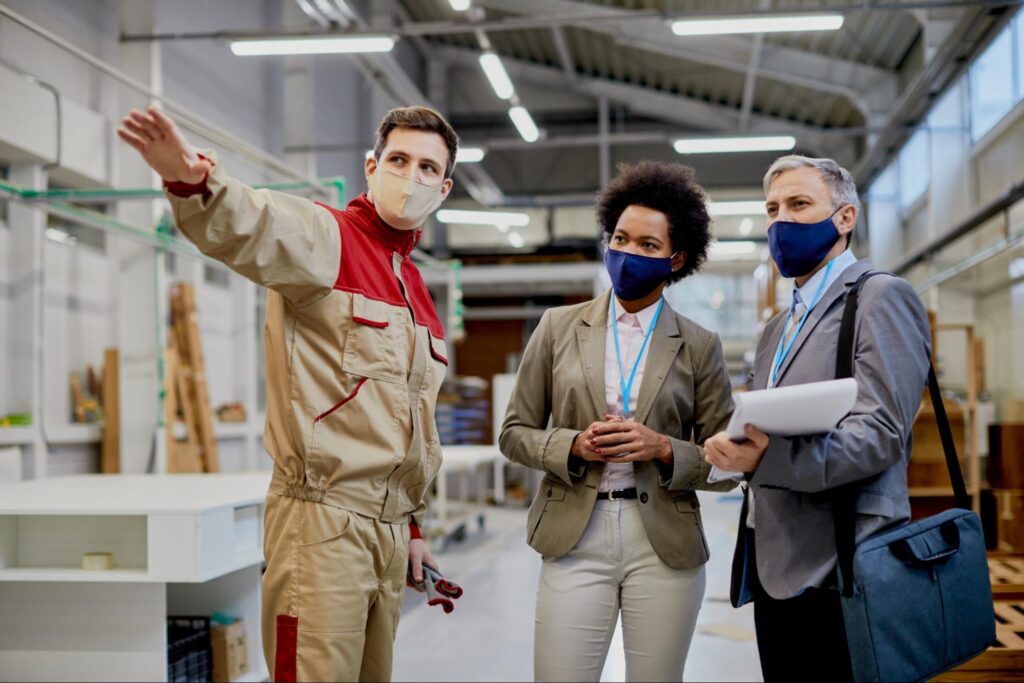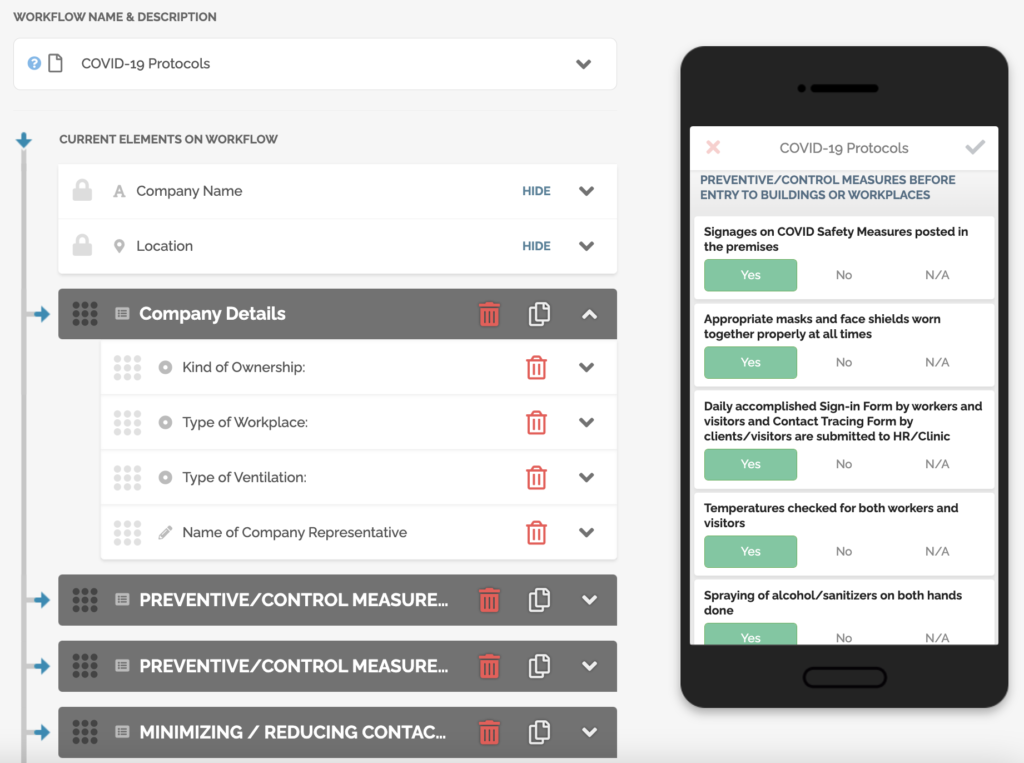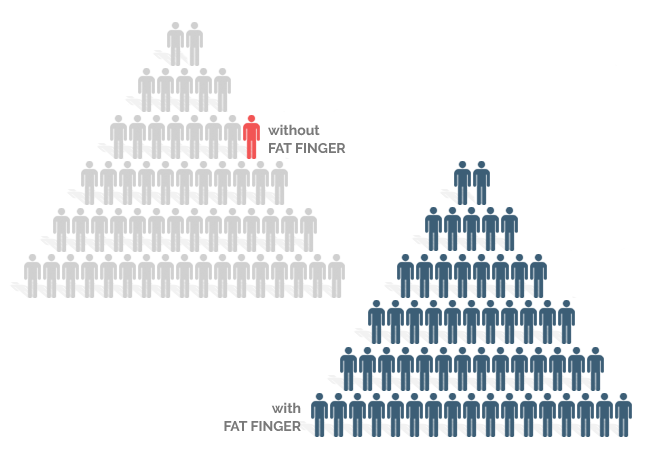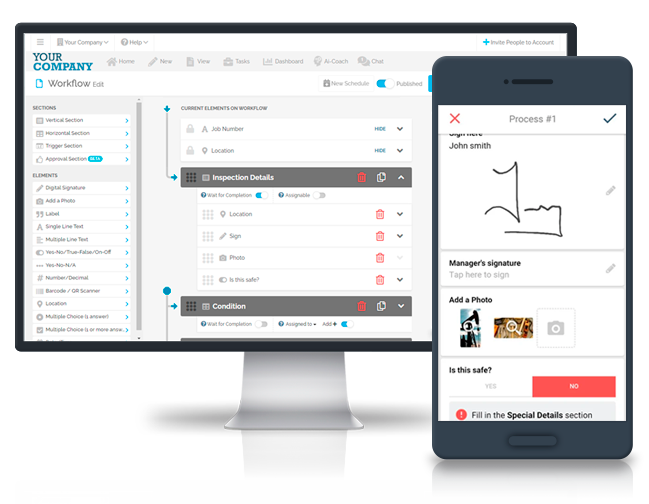The Centers for Disease Control and Prevention released updated guidance for protecting workers from COVID-19, which contains recommendations and descriptions of OSHA’s mandatory safety and health standards.
The COVID-19 protocol checklist is helpful for employers and workers to check for workplace exposure and develop SARS-CoV-2 prevention and control strategies.
Table of Contents:
1. COVID-19 and Its Risks to Workers
2. What to Do if You Think Your Organization Have Been Exposed to COVID-19
3. Guidelines for Employers on Protecting Workers from COVID-19
4. Ensuring a Healthy Workplace with COVID-19 Checklists
COVID-19 and Its Risks to Workers

COVID-19 is a novel coronavirus that was first identified in 2019. It is similar to other coronaviruses, such as SARS-CoV, which caused a global outbreak of respiratory illness in 2003. COVID-19 is primarily spread through contact with respiratory droplets from an infected person. It can also be spread through contact with contaminated surfaces or objects. The virus causes mild to severe respiratory illness, and can sometimes lead to death.
COVID-19 poses a significant risk to workers in many industries. Due to the nature of the virus, it can quickly spread through workplaces where people are in close contact with each other. This poses a severe risk to health care workers, who are often exposed to the virus when caring for patients.
Non-healthcare workers are at risk of contracting COVID-19 if they work in an industry that requires close contact with others, such as food service or retail. They are also at risk if they work in an environment where there is frequent contact with the public, such as a movie theater or museum. Additionally, non-healthcare workers may be at risk if they work in an environment with little opportunity for social distancing, such as a factory or office.
To protect workers, employers must put protocols in place to reduce the spread of the virus. This may include providing personal protective equipment, increasing hygiene measures, and restricting travel.
What to Do if You Think Your Organization Have Been Exposed to COVID-19
Companies across all industries have been forced to confront the risk of covid-19 exposure. While there is no one-size-fits-all solution, there are some basic protocols that every organization should follow if they believe they have been exposed to the virus.
1.Assess the level of risk based on the industry you’re in and the protocols you have in place. If the exposure is a high risk, take immediate action to protect your employees and customers. This may include instituting a temporary shutdown, increasing cleaning and sanitation efforts, or implementing social distancing measures.
2. Notify your employees and customers of the exposure and ask them to self-quarantine if possible. Cooperate with health authorities to help them trace the direction and prevent further spread of the virus. This may include providing them with information about your employees and customers and access to your facility. Covid-19 Incident Surveillance Form can be utilized at this point.
3.Arrange for testing for all employees and customers who were exposed. If any tests come back positive, follow the appropriate protocols for handling positive cases of COVID-19.
If you think your organization may have been exposed to COVID-19, it’s essential to take quick action to reduce the risk of further exposure and containment.

Guidelines for Employers on Protecting Workers from COVID-19
The Centers for Disease Control and Prevention (CDC) and the Occupational Safety and Health Administration (OSHA) have released guidelines for employers to help protect workers from COVID-19. The guidelines are based on the hierarchy of controls to prevent exposure to the virus. Engineering and administrative controls are the first line of defense, followed by work practice controls and personal protective equipment (PPE).

1. Employers should implement engineering controls such as ventilation systems and physical barriers to prevent exposure to the virus. Ventilation systems can help reduce the virus’s concentration in the air by circulating fresh air and filtering out contaminants. Physical barriers such as walls and partitions can also help prevent the virus’s spread by blocking droplets from moving between people.
2.Administrative controls are guidelines put in place to minimize exposure. This can include promoting handwashing, providing disinfectant supplies, and staggering work shifts.
By implementing these guidelines, businesses can help to keep their employees safe and reduce the spread of covid-19. In addition, administrative controls can also help to improve morale and communication within the workplace.
3.Work practice controls such as regular cleaning and sanitizing of workspaces, avoiding close contact with others, and using telework if possible can help to reduce exposure further.
4.Employees should be given PPE such as face masks and gloves. According to the CDC, face masks should be worn in public settings where social distancing is challenging to maintain, such as in grocery stores or on public transportation. Gloves should be worn when cleaning or handling potentially contaminated surfaces.

By taking these precautions, employers can help protect workers from COVID-19 and ensure a safe and healthy workplace.
Ensuring a Healthy Workplace with COVID-19 Checklists

As the world grapples with the covid-19 pandemic, businesses have had to make changes to the way they operate.
One of the biggest challenges is ensuring a safe and healthy workplace for employees. A COVID-19 digital checklist can help with this.
The checklist can be used to effectively implement the COVID-19 protocols and put in place measures to mitigate any associated risks. It can also be used to create a digital compliance record through incident surveillance forms, commercial cleaning checklist, covid sign-in sheets, and the like.
Paper-based checklists are no longer feasible in many cases, as they require close physical contact and can quickly become contaminated.
FAT FINGER was created with your safety in mind. We understand that in times of crisis, businesses need to be able to quickly and easily share safety procedures with employees. That’s why we offer a range of Covid-19 checklists via our app – so you can meet compliance guidelines and remain a safe, secure, and trusted workplace.

With FAT FINGER, you can have peace of mind knowing that all your safety procedures are taken care of. FAT FINGER offers:
-Create COVID-19 custom checklists that are tailored to your business needs
-Workflow can be assigned and conducted by authorized users to gather relevant COVID-19 data
–COVID-19 protocols are stored securely in the cloud, so you can access them anytime, anywhere
-Generate reports on-site and send them to relevant stakeholders via email, PDF, or web link. This way, everyone can stay up-to-date on your latest COVID-19 protocols.
In these uncertain times, it’s more important than ever to ensure your workplace complies with all safety guidelines. Go ahead and take a break from all the stress – we’ve got you covered!
Sign up for a free trial today and experience the difference!
About FAT FINGER:
Ensure front-line teams do their work correctly every time. Drag & drop digital procedures that unlock operational excellence.In seconds anyone can build and deploy enterprise-grade mobile applications using an easy drag-and-drop no-code builder.
FAT FINGER uses machine learning to coach app users in real-time to make safer and improved decisions.Try building your digital procedure on FAT FINGER for free @www.fatfinger.io
COVID-19 protocol reporting made easy for everyone
We empower EVERYONE to initiate and create positive change to improve the company’s COVID-19 protocols. The only way to keep up with the speed at which the world moves today is to empower everyone from the front-line worker to the executive.

Build and customize your COVID-19 protocols in seconds
Every site has its own potential hazards. In FAT FINGER you will be able to import different safety processes and make them your own, or simply create one from scratch. And once you are done, you will be able to export your safety workflow to all of your different sites.

FAT FINGER is a key COVID-19 safety tool
FAT FINGER is the right place where to do all your safety checklists before performing risky tasks out in the field. And also allows any employee to share information in real-time with the entire team, such as photos of a potential hazard.

COVID-19 safety insights in real-time
Every single piece of information captured by your FAT FINGER users will feed your company analytics in real-time. Adopting FAT FINGER will give you show you the risky points of your operations and how to make them risk-free.



